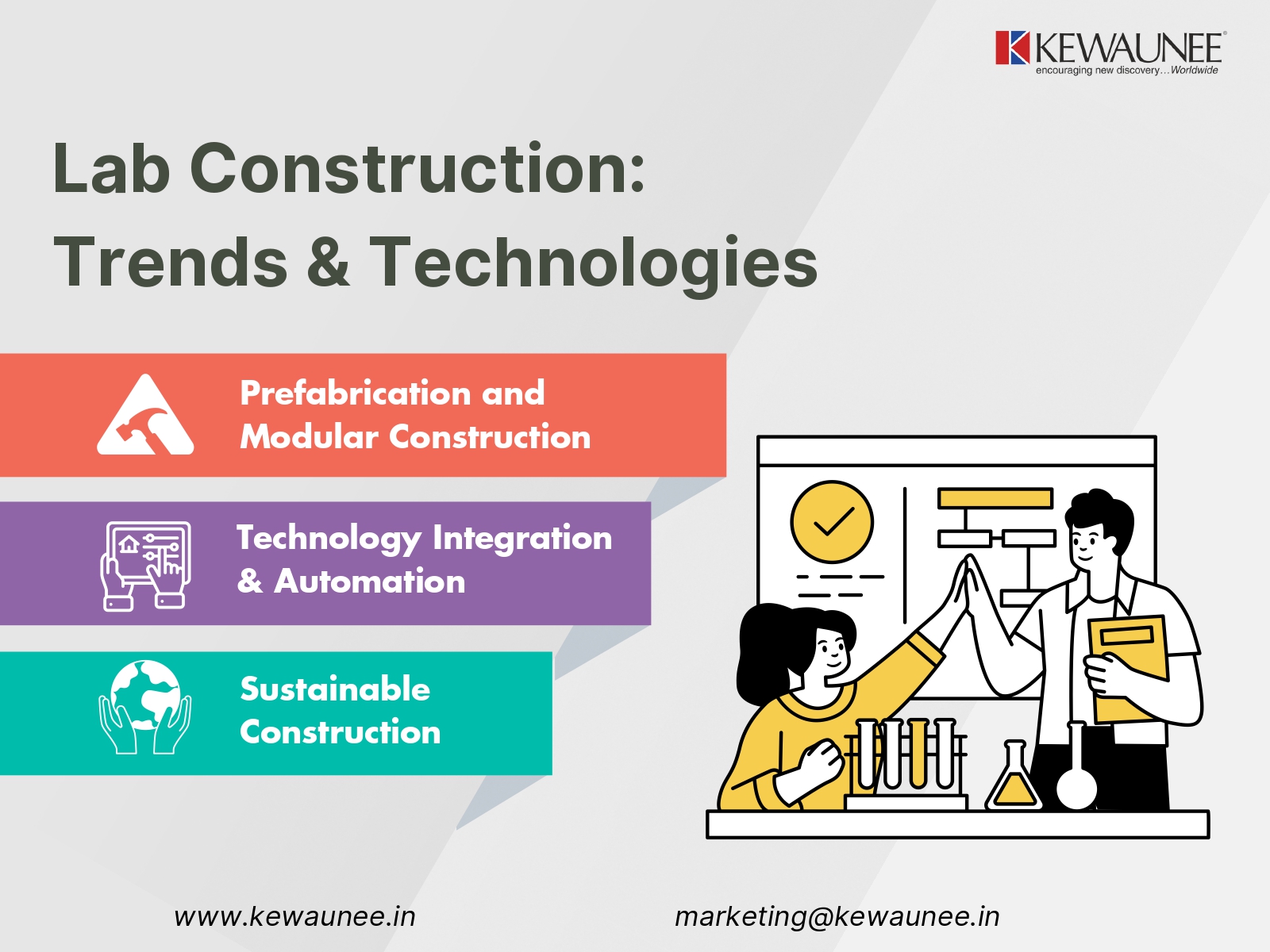Lab Construction: Trends & Technologies
Lab construction is a critical process that involves the creation of safe and efficient workspaces for scientists, researchers, and technicians to conduct experiments and research. The design and construction of laboratories must be carefully considered to ensure that they meet the unique requirements of each project.
This blog provides an overview of lab construction and highlights some of the innovative technologies and trends in lab construction.
Prefabrication and Modular Construction
Prefabrication and modular construction are popular approaches to lab construction. This method involves the fabrication of building components in a controlled environment off-site, then transporting and assembling them on-site.
This process can save time and reduce waste, as components can be mass-produced and quality-controlled in a factory setting. Modular construction also allows for easy reconfiguration and expansion of lab facilities. Innovative designs for modular labs include multi-story units, container-based labs, and hybrid structures.
Sustainable Construction
Sustainability is becoming increasingly important in lab construction as labs can have a significant impact on the environment. Sustainable lab construction aims to reduce environmental impact and promote health and safety.
Innovative designs for sustainable labs include the use of recycled materials, energy-efficient lighting, and low-emission finishes. Advances in technology also allow for the integration of renewable energy sources and energy-efficient systems.
Technology Integration
Technology integration is an essential component of lab construction, as it can enhance efficiency and productivity. Innovative designs for technology-integrated labs include integrated power and data connectivity, task lighting, and touchscreens.
Advances in technology also allow for remote access to lab equipment and real-time data monitoring.
Building Information Modeling (BIM)
Building Information Modeling (BIM) is a digital representation of the physical and functional characteristics of a building. BIM technology allows for the creation of a 3D model that can be used to analyze and optimize building performance.
BIM can be used in lab construction to optimize lab design, streamline construction, and reduce waste.
Safety and Compliance
Safety and compliance considerations are essential in lab construction to ensure that lab facilities meet regulatory standards and are safe for workers. Regulatory compliance for lab facilities includes requirements for ventilation, lighting, and emergency systems.
Implementing safety features and protocols during construction, such as fall protection, scaffolding, and hazardous material handling, is also crucial. Innovative designs for lab safety and compliance include the use of flexible, modular systems that can easily adapt to changing regulations and technologies.
Project Management and Collaboration
Project management and collaboration are critical in lab construction to ensure that projects are completed on time and within budget. Collaboration between stakeholders, including architects, engineers, contractors, and lab owners, is crucial to achieving project goals.
Innovative approaches to project management in lab construction include the use of Building Information Modeling (BIM) and integrated project delivery (IPD) methods.
Future of Lab Construction: Emerging Technologies and Trends
The future of lab construction is bright, with emerging technologies and trends that promise to enhance lab efficiency and safety even further. Some potential future trends in lab construction and operation include:
- Increased use of modular construction and prefabrication
- Greater use of sustainable materials and renewable energy sources
- Improved integration of technology and automation, such as the use of robotics and artificial intelligence
- Greater emphasis on safety and compliance, with stricter regulations and protocols for lab construction and operation.
Conclusion
In conclusion, lab construction is a complex process that requires careful consideration of a variety of factors, including sustainability, technology integration, safety, and compliance. Innovative designs and approaches to lab construction can help promote lab efficiency and safety while reducing environmental impact.
The future of lab construction promises to be even more exciting, with emerging technologies and trends that will continue to revolutionize the way labs are designed and operated.
Comments are closed.











